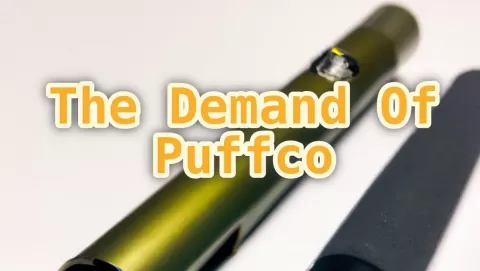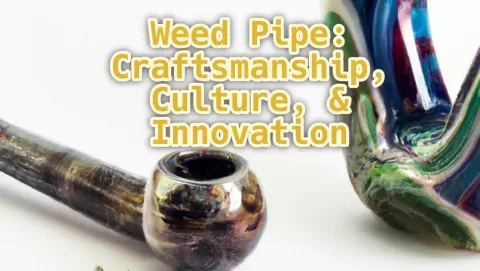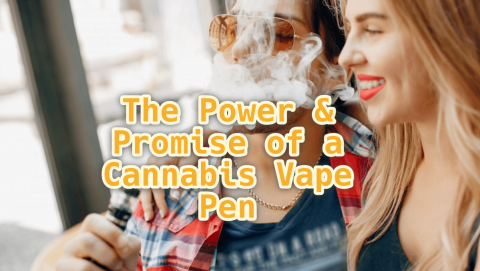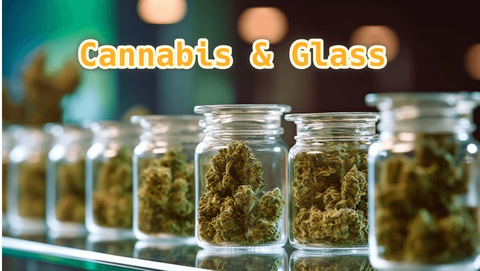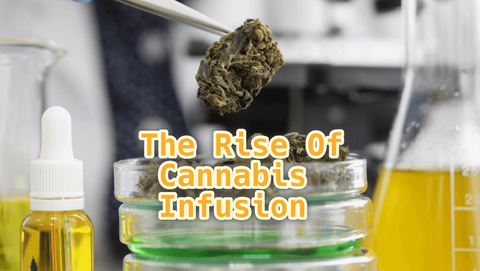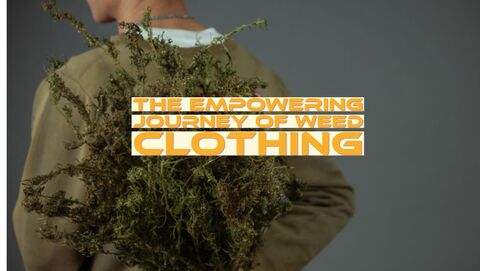Latest Blog Posts
Top rated
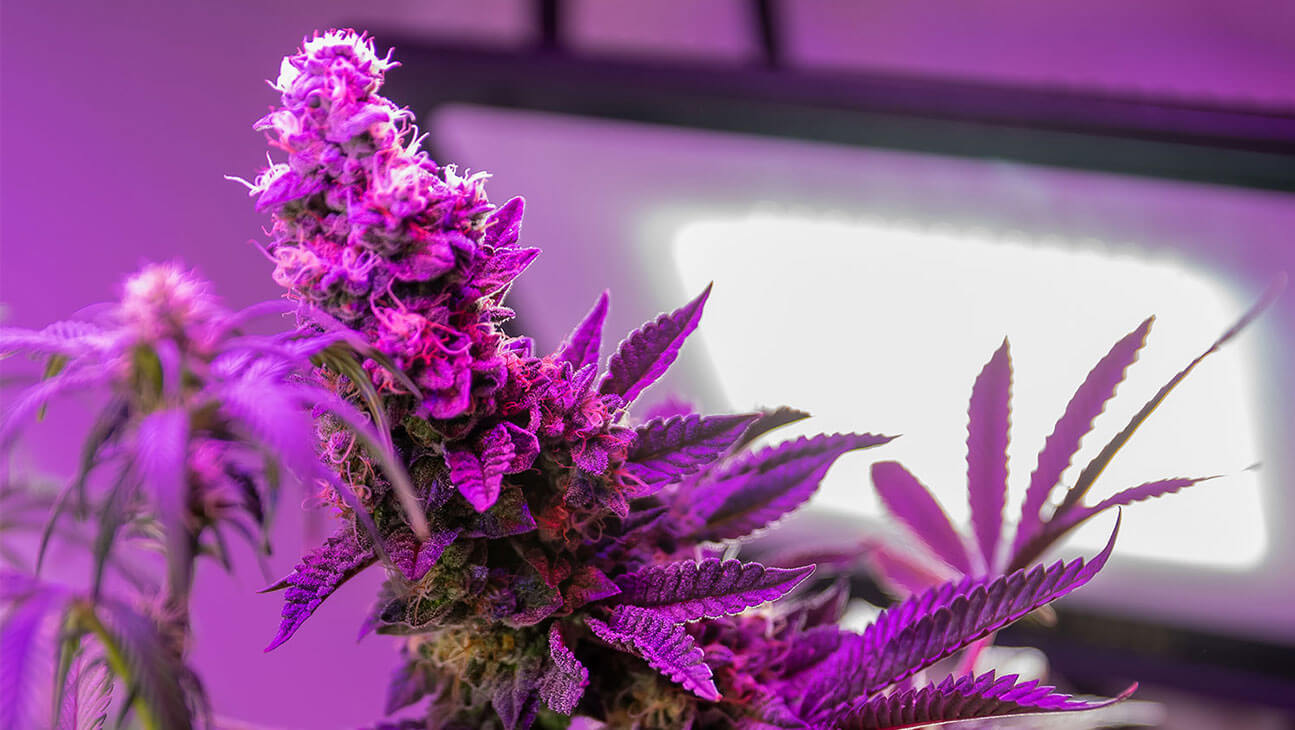
How To Grow Hydroponic Weed
Due to its adaptability, cannabis is often referred to as "weed" even though the word "marijuana" is also often used. Hydroponically grown plants, which are produced in a nutrient-water solution rather than in nutrient-rich soil, lack the robust root systems and genetic variety of their soil-grown counterparts. That said, the portability and setup process make hydroponics an efficient and attractive method for growing weed.
Using this method could include doing nothing more than adding a fertilizer solution to pots of inert material by hand. This article explores how complex systems with several pumps, timers, and reservoirs might save daily labor but at a greater expense owing to their complex design, installation, and maintenance.
What Is Hydroponics?
Options for growing marijuana are diverse. It's versatile in terms of climate and growing conditions, provided it receives the necessary TLC. You may be surprised to learn that cannabis plants may survive even without soil. They do, however, need access to the plentiful water and minerals found in soil. There is no need for soil if the plants can get all the nutrients they need from another source.
Hydroponics relies on this idea as its backbone. The Greek roots of the phrase hydroponics are the terms for water (hydro) and soil (ponics). Therefore, hydroponic marijuana simply refers to growing marijuana in a nutrient-rich water solution or a dormant growth media instead of soil.
Hydroponic methods have been heavily utilized in the cannabis market for quite some time now due to the increased yields and accelerated growth they provide. Whether you've grown cannabis before or not, hydroponics is a great technique to cultivate it in a small or large space. Getting started can seem complicated and overwhelming, but after you learn the fundamentals, you'll see that it's actually rather simple.

Plants may be grown without soil using the hydroponics method, in which the roots are suspended in a medium. Hydroponics' capacity to provide nutrients to plant roots in this efficient manner is remarkable. Your plant will be able to reuse the water that it does not absorb.
The marijuana plants grow in a sterile, inert growth medium while being nurtured in a nutrient- and oxygen-rich water bath and row table. Some people claim that the potency of hydroponically produced marijuana is far higher than that of marijuana cultivated on soil, making it one of the most popular ways of cannabis cultivation. Hydroponics is the way to go, despite the fact that the quality of cannabis grown using either method is disputed.
The Changing History Of Hydroponics
At first look, it may seem that modern technological advancements have led to hydroponic farming. However, this is not at all the case. People have been successfully cultivating plants in water for thousands of years, so the story goes.
As legend has it, hydroponic methods were put to use in the Hanging Gardens of Babylon around 600 BCE. The climate in the Euphrates Valley was harsh since it tended to be dry and parched. All of the garden's fruits and vegetables probably originated in a river and worked their way up a trickle to the garden.
The Aztecs used hydroponics to grow food for their growing population in the tenth and eleventh centuries. Having fled their homeland as a result of violence, these people have now made it to Lake Tenochtitlan. Finally, they built rafts out of dirt that floated on top of the water, allowing crops to grow above the tap layer and send out roots into the canals below.
English scientist John Woodward used hydroponics in his experiments in 1699, making him one of the earliest researchers to do so. His day job was the hydroponic cultivation of spearmint plants. He found that when dirt and water were mixed together, plant life flourished.
What Exactly Does It Mean For Cannabis To Be Grown Hydroponically?
Growing cannabis hydroponically eliminates the requirement for using soil altogether. This method involves cultivating plants and providing them with care in a nutrient-dense liquid that is contained within a sterile medium. There is a common misconception that hydroponic systems are overly complicated and pricey, and thus cannot be used for farming on any scale other than an industrial one.
On the other hand, all that is required for growing marijuana hydroponically is a few pots to be filled with inert material. If you want to do anything that is more complicated, you should be aware that it will require a lot of work to get it up and running and to keep it functioning effectively over time.

As a result of its convenient setup, an increasing number of people are using hydroponic techniques as their method of choice for growing cannabis. Growing marijuana indoors with hydroponics is a considerably more practical choice for growers who experience any of the following challenges, in comparison to growing the plant in soil:
- Concerns relating to the application of topsoil
- Frequent testing of the soil's acidity is required
- Determine the optimal proportions of the various nutrients
- There is always the potential for an infestation caused by insects or rodents
- There is a possibility that you are utilizing dirt that is not acceptable for recycling
Only by working with soil of the highest quality is it possible to obtain a satisfactory yield and an abundant crop.
Quick And Convenient Hydroponic Set-Ups For Growing Cannabis
There are a wide variety of hydroponic cultivation techniques, each with its own set of benefits. It's important to carefully select the medium for your cannabis plants because different construction materials have slightly different benefits and drawbacks. Drip line hydroponics, which is discussed in this piece, can be used.
Technology for future greenhouse hydroponics: While this system is built from the ground up, it nevertheless offers a lot of plug-and-play choices for those who would rather not deal with the hassle. When it comes to solving a problem, plug-and-play technologies provide everything a farmer needs in a single, easy-to-install package.
Beginning with going over the prerequisites, remember that this is only an example and that a hydroponic system's various components can be modified to fit your unique growing space and desired yields. Hydroponic system components only; does not include grow room necessities as electricity, ventilation, and filtration.
Consider Looking At Available Hydroponic Gardening Equipment
You may start constructing your hydroponic system as soon as you have all the necessary components. The reservoir has to have some groundwork done on it first including keeping food in a storage tank.
It is important to consider the dimensions of your grow space while selecting a reservoir for your water pump and air stone. The air pump will be hardwired into the air stone, and a conduit will go from the grow table to the drain. The reservoir will also serve as a convenient place to keep the piping and power wire for the drip system.
The next step is to assemble the plant stand. If there is ever an overflow at the plants, the table will be there to collect it and return it to the reservoir. It's necessary to have a dip in the center of the table for the water to drain into. At its lowest point, water may be drained into the reservoir using plastic pipes.
Clay pellets should be put into the five-gallon buckets that have been placed on the table. If you want your plants to thrive, soak the clay pellets they will be consuming in water overnight before using them. The grow table's surface can deteriorate if water sits in one spot for too long, so be sure your buckets have drain holes in the bottom. To prevent clay pellets from passing through or clogging the perforations, they should be roughly half the diameter of the pellets.

The water pump must be linked to the cultivation table through the plastic tubing. Drip line tools may be used to perforate the plastic tubing, and then the line can be strung from one bucket to the next. When you're done, connect the drip line's emitters at both ends.
To put your setup through its paces, you don't even need any live plants. Never allow standing water to form in your network. The reservoir's water needs regular aeration and circulation, so the air pump is running all the time; any overflow from the five-gallon buckets and the grow table is drained back into the reservoir. Having completed these steps, you are prepared to mix your nutrient water solution in your reservoir. In the next section, you will learn about nutrients and how to use them when growing cannabis.
Introduce your plants into the solution once it is ready. Put the clones or strains you've already started growing in rockwool into the clay pellets. To provide water to the rockwool and roots of your seedlings, you'll need to set up a drip line.
This setup's main advantage is its scalability; if your plant collection needs increase, you can simply add additional pots and a larger reservoir. Adding new pots to an existing drip line system is as simple as running new tubing to the containers.
Nutritional Needs Of Hydroponically Cultivated Cannabis
Paying close attention to your hydroponically produced plants is crucial to their growth. Different hydroponic feeding solutions are developed for use at different stages of a plant's development and many companies make them. At all times throughout the growing phase (the "vegetative stage"), nitrogen-rich nutrient solutions are utilized, whereas phosphorus-rich solutions are favored during the flowering phase.

Powders and liquids that are already prepared for consumption will make up the meals for the plants. Powder nutrient fertilizers are more cost-effective and take up less space, while liquid pre-mixed nutrients are easier to apply and more forgiving for beginning gardeners.
Hydroponic vs. Soil-Grown Cannabis Cultivation
There are many key distinctions between hydroponics and traditional soil gardening. Keep in mind the plant's assisting factors. Unlike their soil-grown counterparts, plants produced in hydro medium are more likely to topple over and break. Plants can be trained to grow in specific directions with the help of trellises in your garden, which will also help to prevent this problem.
Pruning is another important factor to consider. Utilizing hydroponics, your plants can mature rapidly. This means that you will need to prune with extreme care. Before your plant reaches its flowering phase, remove all of the lower leaves and "top" it so that the top colas (the huge buds at the very top) receive all of the light and nutrients they need.
The initial time and resources spent on setting up a hydroponics system are a substantial investment before you even plant your crop. So that your plants can thrive, it's also important to check that your system is operating correctly and that the nutrients you're using are of the highest quality. Learning hydroponics will put you on the path to growing cannabis of the highest quality.
At-Home Marijuana Cultivation Using Hydroponics
Hydroponics is a method for producing cannabis that eliminates the need for soil by situating the plant in an inert material like coco or a water reservoir and providing it with all of its nutrients hydroponically. Since coco coir lacks any nutritional value on its own, hydroponic cultivation techniques are required.
If nutrients aren't provided to a hydroponically grown plant from the time it's a seedling (at seedling doses initially), the plant will grow slowly since it's just getting the nutrients it needs from the seed. You won't have to worry about fertilizing for a while because coco coir is already nutrient-rich.
Vegetative growth for hydroponic plants is often faster than that for soil-grown plants. Growing in a reservoir eliminates the risks of overwatering, underwatering, and runoff. A hydro reservoir needs to be maintained, but in my opinion, that's far less of a hassle than, say, switching plants or clearing up the gutters.
It's possible that growing in a reservoir might help you save money on pricey fertilizers by reducing the frequency with which you have to mix up fresh water and the frequency with which you have to dump old water.
There Are Drawbacks To Using Hydro
Growing plants in hydroponic systems takes more time and effort than traditional gardening in the ground. You're doing more work for the plant yourself, rather than letting nature take care of some of it. Since it's simple to get started with dirt-based gardening, and some gardeners may already have expertise working with soil, it's a popular choice.
How about a system where the roots of cannabis plants dangle in a pool of water? Hydroponics in the form of Deep Water Culture (DWC) has been practiced for decades, if not centuries. The use of DWC for cannabis cultivation is increasing as more farmers learn how to use it. Hydroponic systems are awesome for growing plants without the bother and mess of dirt.
The Advantages Of Hydro Versus Dirt Are Clear
Increased yields and shorter harvest periods are the benefits of hydroponic reservoir-grown plants' rapid vegetative growth. Buds grown in hydroponic systems tend to be more expensive but also more potent.
A hydroponic reservoir requires nothing in the way of upkeep after it has been set up. The only maintenance required of hydro reservoirs is the periodic dipping with a PH Pen and topping up or altering the water level, eliminating the need to regularly water plants and clean up any surplus water.
Perfume is produced in higher quantities by plants cultivated in soil without added nutrients than by plants grown with liquid nutrients, such as in a hydroponic system (though the latter method may be favored if you're seeking for a faint aroma).
Your plants might die from root rot if you don't provide them with the right nutrients and care. Hydroponics requires minimal upkeep after you've established a routine, but setting up shop might be a challenge.
Seeds, Clones, And Growing Media For Cannabis Found In The DWC
By nurturing your plants inside of a grow tent, you may spare yourself the hassle of making adjustments to the surrounding climate. Your initial grow requires a high-pressure sodium (HPS) grow lamp of either 250W, 400W, or 600W in power, if you do not already have one. Within the realm of deep water culture, these grow lights are in a league of their own (DWC).
If you know what to look for and where to look for it, you should have no trouble finding sources of nutritious seeds. Since it is nearly difficult to purchase a DWC tank that has already been completed due to the low cost of the individual components, it is essential to acquire the skills necessary to construct one on your own.
After you have completed all of the preparations necessary to establish your business, you may at long last go to work. Prepare some water so that you may sow seeds and water young plants when they have germinated.

It is essential to ensure that the tank always has an adequate amount of water in it. It is recommended that you wait three to four weeks before restocking the entire system in order to give the beneficial bacteria in your reservoir enough time to flourish. Plant food should be fed to the water in the reservoir if the water level falls below a certain point.
This threshold has been predetermined. Consequently, your root colony will have as much time as possible to become established on the roots of your plants before you completely change the water, and the vitality of your plants will gradually increase from the seedling stage to the vegetative stage without experiencing any stress.
How Can One Experience The Process Of Cultivating Plants Through The Usage Of Hydroponic Methods?
The challenge of producing cannabis using hydroponics is immediately outweighed by how much easier it is compared to growing the plants in soil when one considers how much simpler hydroponics makes growing cannabis. As a result of the fact that nutrients are dissolved in water, hydroponic systems are able to supply their plant subjects with an accurate dose as well as direct sustenance.
The capacity of a plant's roots to absorb nutrients in an effective manner is one factor that contributes to the rapid development of the plant. Once it is installed, the reservoir for the hydro system requires very little maintenance.
Is It True That Hydroponically Grown Plants Mature Faster Than Soil-Grown Plants?
When compared to the growth rate of a soil garden, the pace of growth in a hydroponic garden may be anywhere between 30 and 50 percent faster. The presence of nutrients, water, and oxygen at the plant's roots in hydroponic systems is responsible for the accelerated rate of growth that these systems produce.
When Compared To Normal Agricultural Methods, What Makes Hydroponic Farming Better?
The two most evident benefits of growing cannabis in a hydroponic garden (faster growth and less work) are only the beginning. Put off your rain dance until places like California really need it. Without the need for soil, hydroponic plants can reduce their water usage by as much as 20%. No water is wasted since the water used to cultivate plants may be recycled.
Another major benefit has to do with spacing since growing plants hydroponically may need up to 20% less space than planting in soil. Hydroponic systems allow for pest-free cannabis cultivation, eliminating the need for potentially harmful pesticides. Although hydroponics systems are robust and can be used in a variety of environments, the best place to grow cannabis is in an indoor garden where the plants can be maintained year-round.

When compared to plants cultivated on soil, the buds harvested from hydroponically grown cannabis plants are far more powerful. Hydroponically cultivated cannabis might command a higher price at some shops. Hydroponic systems provide a number of benefits, however there may be issues with the growing medium.
A Short Summary Of Hydroponics Drawbacks
The time and money required to set up a hydroponic system might be substantial. There are two other major drawbacks to this increasing medium that should be taken into account.
In order to keep your plants alive and well, you must keep a close eye on the garden at all times. When growing cannabis hydroponically, the loss of even a single plant might ruin the entire crop. Harmful microorganisms thrive in humid environments, threatening plant health right before harvest.
Growers that are aware of the risks associated with a power loss can benefit greatly from hydroponics. It may be necessary to manually water and fertilize the garden during a protracted power loss, even if the system has a backup generator. If the advantages of hydroponics outweigh the disadvantages, you might be ready to give it a try in your own house.
A Passive Hydroponic System May Be Used To Grow Marijuana
These hydroponic systems are quite straightforward in their designs, as they use gravity to grow plants. They use non-electric, low-tech methods to irrigate and feed cannabis plants' roots. The most common types of passive hydroponic systems are kritty and wick systems.
Minimizing the amount of moving parts is key to creating a passive hydroponic system. They're great for getting things rolling and are a more affordable entry point into this hydroponics-inspired method of cultivation. Using passive systems has several benefits, the most important of which are as follows:
1. Costs that won't drain your wallet
2. Rapidly assembled
3. The ideal place to start
4. This reduces the amount of supplied energy that is necessary.
As Its Name Implies, A Drip Line Hydroponics System Requires A Steady Stream Of Water
Several cannabis plants are fully submerged in a water bath that is a component of a drip line hydroponics system. A drip line is connected at one end to the pump in the reservoir, and at the other end, individual plants receive their water.
If the plants don't drink all the water, the dripper will send it back into the tank (a type of drain pipe in a water bath). Due to its high efficiency in water conservation and low amount of waste produced, this hydroponic system is best suited for use in dry climates.
Quick Steps For Hydroponic Setup
1. The first step in this process is to prepare the reservoir.
The reservoir or water tank, in which the nutrient solution will be stored, should be of a size appropriate to the dimensions of your grow space. The air stone and water pump are located in the reservoir. A pipe for the air pump and a drainage line bring water to the reservoir. The water pump's power wire and the conduit that runs between the pump and the drip line will be kept in the water tank.
2. The second step is to make the grow table functional.
Drip irrigation systems are utilized to return any excess water from plant growth to the reservoir via grow tables. For the dripper to work, you will need to make a depression in your grow table's top.
3. Third, have your hydroponic containers ready.
If you use clay pellets, you should fill the containers about halfway. So that the roots can use the water in the pellets, it is important to soak them in water overnight.
4. The fourth step is to put together the drip line.
Use the plastic tubing that came with the grow table to connect the water pump to the table. Plastic tubing with holes drilled into it may be used to transport water from the sink to individual potted plants. Put in emitters for the drip lines at both ends.
5. The fifth stage involves extensive system testing.
To test the system, go ahead and turn on the air pump and water pump. The air pump allows the reservoir's water to be oxygenated on a continual basis, and any overflow from the containers may be poured back into it. No pools of water can form in the area throughout the length of the treatment.
6. Sixth, put the seedlings in the ground.
The Rockwool should be replaced with the clay pellets as soon as the seedlings are large enough to handle the transition. Now that the drip line is installed, water can be sent directly to the Rockwool and plant roots.
Varieties Of Hydroponic Substrates
The most common and inexpensive hydroponic substrate is expanded clay. High heat baking causes these clay orbs to puff out like popcorn. As a result, the clay balls become very porous and simple to manipulate. Contrary to popular belief, expanding clay does not absorb water.
The little red balls are permeable to water but cannot retain any liquid. However, expanded clay has great capillary activity, so plant roots can suck water and nutrients through its pores and into the soil. Similarly to how a sponge absorbs water through tiny pores, the angular particles of seramis may soak up liquids. Substrate may store water and then provide it to plant roots when they require it.
Due of these differences, watering and upkeep needs for the two clay granulates are distinct. Hence, Seramis is NOT a hydroponic substrate, but rather an independent planting system. In recent years, lava quarry and expanded shale have joined clay granulates as preferred media for hydroponics of large or outdoor plants.
Take cuttings without soil if you want to get a jumpstart on hydroponics. However, a very fine-grained granulate is required due to the fact that the plants and their roots are still relatively little at this stage in their development.
Fertilizing Weeds In A Hydroponic System
The professional hydroponic gardener uses the term "nutrient solution" rather than "water" when talking about the liquid used to care for plants in granule form. Unlike potting soil, the nutrients in clay or rock grains are not readily available to the plants. Therefore, hydroponic weeds need to be fertilized on a consistent basis.
The best way to fertilize hydroponic plants is with liquid fertilizers, which should be added every time the weed container is replenished. Make sure the fertilizer you buy is suitable for hydroponics and meets your plant's specific requirements.
No chemicals should have built up in the substrate, and the fertilizer used in hydroponics should be completely soluble in water (for example, certain salts).
Attention! Hydroponics require chemical fertilizer, not biological.
The granulate does not allow for the transformation of its organic components. When they settle, they promote the growth of mold and bacteria in the granules, which produces unpleasant smells. However, the use of ion exchange fertilizers and salt fertilizer systems, both of which are well suited to hydroponics, is often limited to professionals due to their high cost and complexity.
Hydroponic plants and the substrate in the plant pot should be thoroughly rinsed at least once a year to remove debris and deposits from the nutritional solution. This will prevent the salinization of the hydroponics.
Why Not Use Soil Instead?
Fertilizers including nitrogen, phosphorus, and potassium are crucial to plant development. When these salts are mixed with water, the plant's roots may be able to take them up. When the soil's components are in harmony, they can supply the nutrients a plant requires to flourish. Such ideal soil conditions are extremely unusual because of problems including a lack of surface organic matter, contamination, and biological imbalances.
More nutrients can be made available in hydroponics than in soil. When grown in a hydroponic system, plants don't need their roots to spread out and look for food on their own. Nutrients leach out of the soil, and its fertility is notoriously hard to assess.
In hydroponics, the water's pH and nutrient concentration may be easily monitored and adjusted to guarantee the plants are never starved. Watering soil plants is the only way to get the basic components to mix with the liquid.
Hydroponic systems have constant, or at least consistent, access to water. Furthermore, earth is home to a wide range of unpleasant organisms, illnesses, and pests, whereas hydroponic growth components are inert and sterile, producing a very hygienic environment for the plant and its owner.
How Many Distinct Kinds Of Hydroponic Farms Are There?
Different hydroponic cultivation techniques have their perks and drawbacks. Ultimately, these methods are essentially different ways of giving plants the nutrients they would normally get from soil. All things considered, hydroponic systems can use either active or passive fertilizer adding methods.
When used in conjunction with passive approaches, a medium can provide a plant's roots with nutrients, water, and oxygen even in the absence of soil. Because they need the gardener to actively supply nutrients and allow for their recycling, active growth systems take more time and effort from the gardener. Any opportunity to avoid using a system that sends water and nutrients to the drain instead of where they are needed should be significantly considered.
A Top-Fed Or A Drip System
Drip irrigation systems are the most popular and efficient method for hydro grows because they ensure that each plant receives the same precise amount of nutrients at the same precise time. The nutrients are "leaked" into the top of the pot through a spaghetti tube. This submersible pump sends any extra nutrients to the cannabis plant's roots that aren't taken up by the leaves, roots, etc., at the right moment. It's recyclable. Drip systems need to be checked often due to the drastic shifts in pH and nutrient content.
Aeroponics
This technique is unique in that you are not making use of a growth media in any way. However, just a very small quantity is required by most gardeners in order to root a cutting or seedling. The roots of marijuana plants hang down in the wet environment in which they are grown. It is necessary to apply a very light mist that contains nutrients. Begin a plant from the ground up.
It is possible that the roots will take in a significant amount of oxygen in this manner. As a result, the plant may potentially develop up to ten times faster than it would if it were grown in soil, and it suffers very little loss of water due to evaporation. If you want to proceed in this manner, check to be that the misting valves are not obstructed in any way, since this would prevent any water from reaching the plant's roots. In such a scenario, the plants will perish.
The Bottom Line
Cannabis is frequently referred to as "weed," despite the fact that the word "marijuana" is the one most associated with this controversial plant. Hydroponically grown plants are created in a nutrient-water solution rather than in nutrient-rich soil. As a result, hydroponically grown plants do not have the same robust root systems or genetic variability as their counterparts that are grown in soil. What do you need to do with hydroponic cannabis?
In order to use this growing method, you could need to do nothing more complicated than manually pour fertilizer solution into pots containing inert material. The first part of this series highlighted how complicated systems that contain a number of pumps, timers, and reservoirs could reduce the amount of daily labor required, but they do so at a higher cost due to the complexity of their design, installation, and upkeep. So, you can grow hydroponic cannabis, which can be done in various places.
There is a wide range of potential places for marijuana cultivation. It can adapt to a variety of climates and growth situations as long as it is given the attention to detail that it requires. It is possible that the information that cannabis plants may live even without soil will surprise you. They do, however, require access to the abundant water and mineral resources that can be found in the soil. If plants are able to obtain all of the nutrients they require from another source, then the use of soil is not necessary.
Because of the higher yields and more rapid growth they produce, hydroponic techniques have been widely used in the cannabis industry for some time now. This is owing to the fact that these techniques have been around for quite some time. It doesn't matter if you've grown cannabis before or not; hydroponics is an excellent method for cultivating the plant in either a small or a huge space. It's easy to feel overwhelmed and confused when you're just starting out, but once you get the hang of the basics, you'll realize that the process is actually rather straightforward.
DISCLAIMER: This material is for informational purposes only and should not be relied on for legal, medical, financial, or any other form of professional advice.



